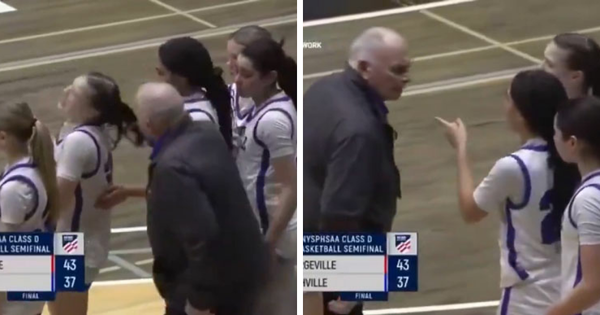High levels of uninsured deposits helped do in Silicon Valley Bank and Signature Bank. But it turns out they're not alone.
Ten banks owned by U.S.-listed financial companies — including Bank of New York Mellon, Northern Trust and Citigroup — are among those with the highest percentage of domestic deposits that are uninsured, says a new analysis by S&P Global Market Intelligence. Failed Silicon Valley Bank and Signature Bank are two of the 10 firms S&P Global Market Intelligence identified.
Insurance from the Federal Deposit Insurance Corp., or FDIC, guarantees bank deposits per institution per person up to $250,000. Some bank clients, for various reasons, leave more than $250,000 deposited at banks. And the FDIC does not officially insure such excess deposits. Such exposure spooked Silicon Valley Bank customers as depositors demanded their money back en masse in a classic bank run.
"Silicon Valley Bank and Signature Bank had some of the highest proportions of estimated uninsured domestic deposits across the entire industry," said S&P Global Market Intelligence's David Hayes in a report.
Looking At Banks' Uninsured Deposits
Events at Silicon Valley Bank brought to light the unexpected risk to banks with such high degrees of uninsured deposits. It doesn't take much to trigger a stampede of depositors firing up their banking apps and trying to transfer money out.
Uninsured deposits surged at many banks in the wake of the pandemic. Large U.S. banks held $7.9 trillion in uninsured deposits at the end of 2022, up nearly 41% from 2019, S&P Global Market Intelligence found. The level in 2022 eased from 2021 as people found better places to put money than in bank accounts.
"Silicon Valley Bank ranked second among banks with more than $50 billion in assets, with 93.9% of its total domestic deposits being uninsured, while Signature Bank ranked fourth, according to S&P Global Market Intelligence data as of year-end 2022," Hayes wrote.
Looking at the banking landscape highlights some other banks with high levels of uninsured deposits. "Only three other banks estimated uninsured domestic deposit rates above 80%. All three, Bank of New York Mellon, State Street Corp. and Northern Trust Corp., are large trust/custodial banks."
But Hayes isn't sounding a warning, per se. Why not?
Uninsured Deposits Are Only Half The Story
The high level of uninsured deposits is only half of the risk Silicon Valley Bank faced. The other factor was the bank's high level of securities being held all the way to maturity compared with total deposits. This reliance on long-term investments made it difficult for Silicon Valley Bank to sell and raise capital fast enough to meet the swelling withdrawals from depositors.
"When compared to Silicon Valley Bank and Signature Bank, the trio (of Bank of New York Mellon, State Street and Northern Trust) had much lower ratios of total loans plus held-to-maturity, or HTM, securities to total deposits," Hayes said.
For instance, Bank of New York Mellon's loans and hold-to-maturity securities are only 31.2% of total deposits. And that percentage is only 40.1% and 54.5% at State Street and Northern Trust, respectively. Compare that with the nosebleed levels of 94.4% and 93.3% at Silicon Valley Bank and Signature Bank, respectively.
"As a G-SIB and America's oldest bank, BNY Mellon has a strong, well-capitalized and lower credit risk balance sheet with $406 billion in total assets as of year-end 2022, out of which $197 billion are in cash or other High Quality Liquid Assets, with a loan to deposit ratio of 24%," said a statement from the Bank of New York Mellon.
Understanding The Risk At Banks
That's not to say some banks don't have high exposures to held-to-maturity securities. Two do. "Only two banks with more than $50 billion in assets and at least half of their domestic deposits estimated as uninsured had total loans plus held-to-maturity securities that exceeded deposits at year-end 2022. First Republic Bank had the highest, at 110.6%, while Western Alliance Bancorp.'s subsidiary, Western Alliance Bank, was at 101.7%," the report said.
But it's important to note that First Republic and Western Alliance also have "much lower" levels of uninsured domestic deposits than Silicon Valley Bank and Signature Bank, 57.7% and 67.7%, respectively.
Keep in mind, too, that the rules have changed to offer safeguards.
"Regulators also said that depositors at Silicon Valley and Signature would have access to their funds. The moves have not completely taken the panic out of the system as bank stocks were battered on March 13, but share prices were bouncing back in early trading March 14," the report said.
Banks With Highest Uninsured Deposit Balances
| Company | Symbol | Uninsured deposits / domestic deposits (higher is riskier) | Loans and held-to-maturity securities / total deposits (higher is riskier) | YTD % change |
|---|---|---|---|---|
| Bank of New York Mellon | 96.5% | 31.2% | -0.1% | |
| SVB Financial Group | 93.9% | 94.4% | -53.9% | |
| State Street | 91.2% | 40.1% | -1.8% | |
| Signature | 89.7% | 93.3% | -39.2% | |
| Northern Trust | 83.1% | 54.5% | -3.1% | |
| Citigroup | 77.0% | 64.6% | 4.3% | |
| HSBC Holdings | 72.5% | 47.4% | 11.9% | |
| First Republic Bank | 67.7% | 110.6% | -69.1% | |
| East West Bancorp | 65.9% | 91.1% | -13.9% | |
| Comerica | 62.5% | 72.8% | -36.6% |
Sources: S&P Global Market Intelligence
Follow Matt Krantz on Twitter @mattkrantz







